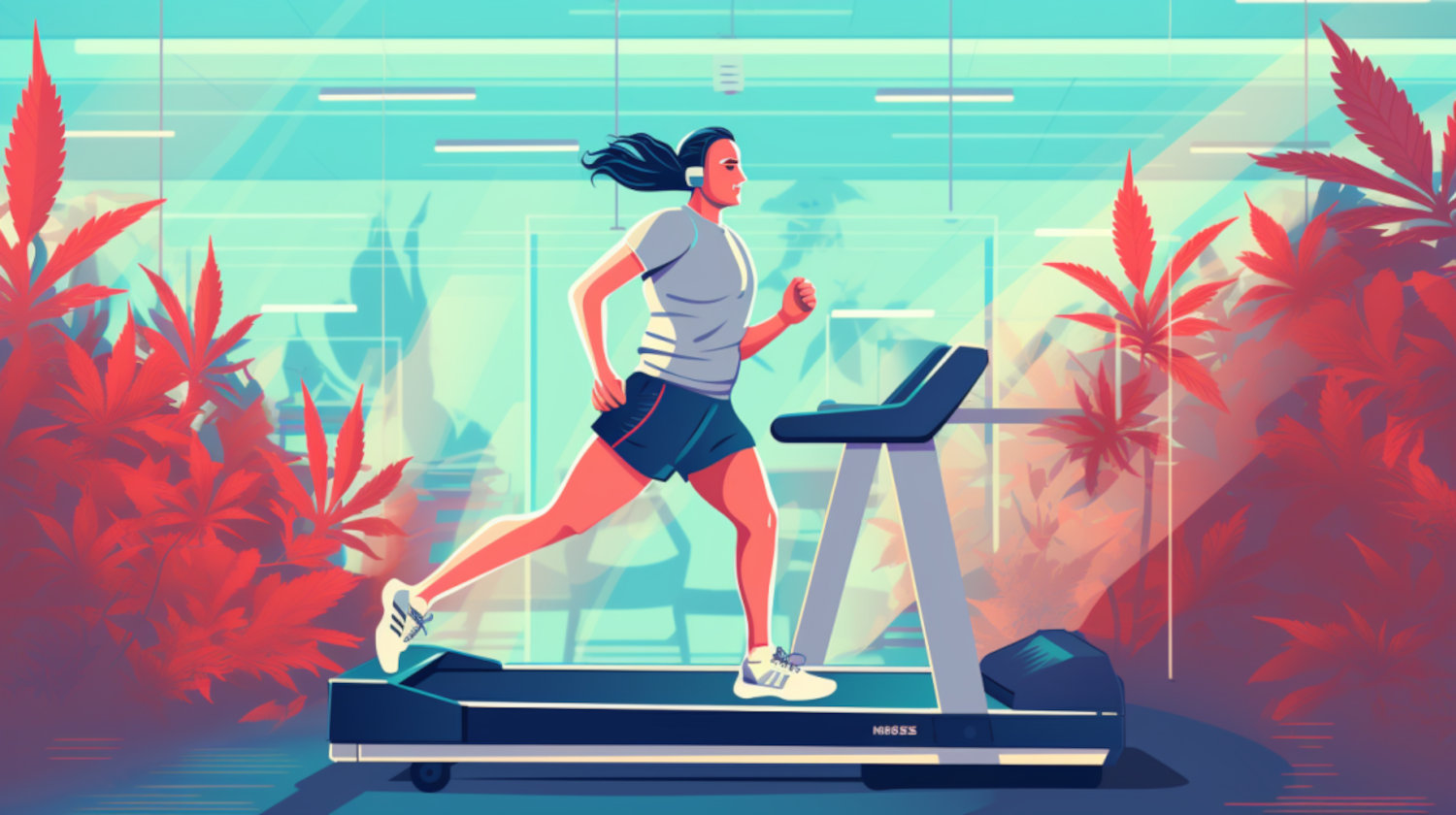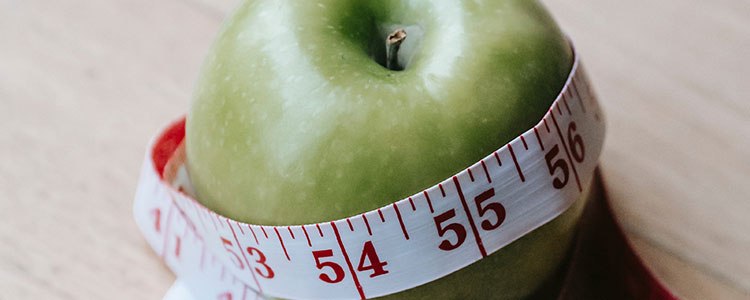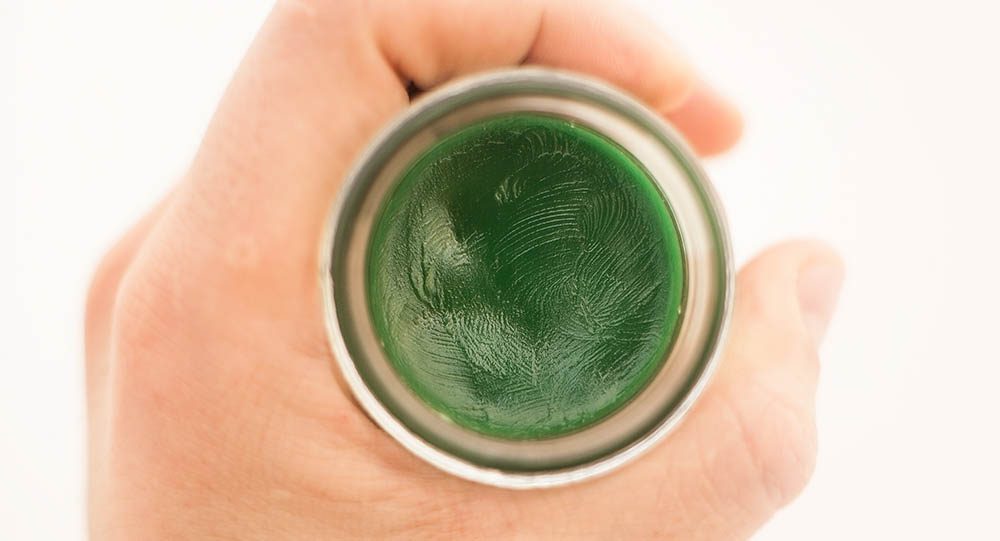In This Article
- Can I Work Out While High?
- Are There Any Benefits to Working Out While High?
- What Are the Possible Risks of Working Out While High?
- Who Should Not Work Out While High?
- How Long Should I Wait to Work Out After Taking Cannabis?
- What Are Some Tips and Precautions When Working Out While High?
- Are There Any Strains or Cannabis Products That Can Help in Working Out?
- Cannabinoids
- Terpenes
- Pre-Workout Strains
- Post-Workout Strains
- References
Key Takeaways
- At the right dose, working out high is generally considered safe.
- Working out high may improve focus, boost energy, aid in muscle recovery, and improve the experience.
- Risks include impaired coordination, increased cardiovascular risk, and feeling tired.
Getting high on life with a gym-fueled surge of adrenaline and endorphins is the ultimate rush, but what about adding a cannabis "high" to the equation? Working out high is a lifestyle choice many active individuals relish - a 2020 survey of almost 50,000 athletes of varying ages and abilities revealed that 25% used cannabis within the past year.1
With the global cannabis market on track to yield US$51.27 billion in 2023, the coinciding rise of consumption among athletes and fitness fanatics is no surprise. Working out while high may be the new norm for many, but is it wise to mix sports with Cannabis sativa?
Can I Work Out While High?
Yes, you can, but the effects depend on the type of cannabis and you. Scientists have barely scratched the surface of cannabis' deep-rooted natural healing capabilities. We still don't know everything about the primary cannabinoids, cannabidiol (CBD) and tetrahydrocannabinol (THC), let alone the hundreds of other naturally occurring compounds.
A medical review published in the Journal of Cannabis Research suggests that, "No evidence exists for ergogenic or ergolytic effects from chronic cannabis consumption." So, the jury is still out. The lack of clarity on the subject doesn't deter people from integrating cannabis into workouts, though.2
Interestingly, 81.7% of people who partook in a study published in Frontiers in Public Health — most of whom were males — acknowledged the benefits of working out high. After consuming cannabis, study subjects reported engaging in longer aerobic and anaerobic exercise sessions and experiencing greater enjoyment while exercising improved recovery, and elevated feelings of motivation.3
Dr. Brian Kessler, owner and Medical Director of Spine and Sports Medicine in midtown Manhattan, tells us, “I’ve had an increasing number of athletes ask about using cannabis while working out. With the right dosage, it could aid in alleviating muscle and joint pain as well as improving recovery time.”
Are There Any Benefits to Working Out While High?
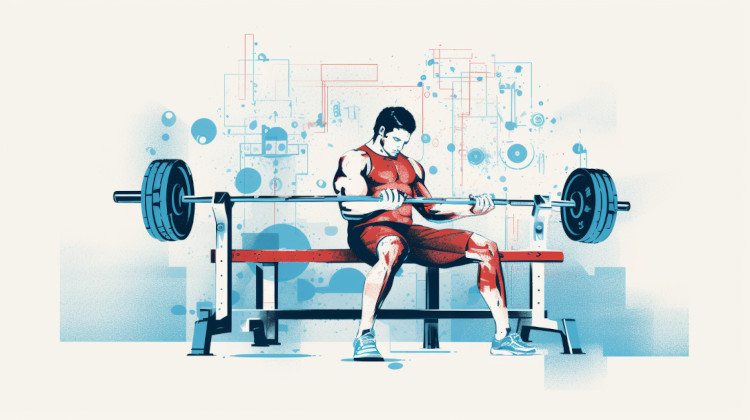
A swelling body of research hypothesizes that cannabis may help break down the common barriers that deter individuals from exercising, such as lack of motivation, boredom, and poor recovery.4
“Weed won’t improve strength or endurance directly,” Dr. Kessler says, “but it can be a valuable aid for medical cannabis patients and recreational consumers struggling to find the motivation to exercise. And many athletes rely on cannabis for relief from pain and inflammation, during both the workout and the workout recovery.”
Conversely, the plant may also have the opposite effect on some consumers. Numerous factors can influence the physical and mental effects of cannabis, e.g., cannabinoid composition, dosage, tolerance, weight, and genetics.
Let's ponder the medical benefits of using cannabis for exercise:
- Improved Focus - A Pilot Study Assessing the Impact of Medical Marijuana on Executive Function from Harvard Medical School discovered that, "After three months of medical marijuana treatment, patients performed better, in terms of their ability to perform certain cognitive tasks, specifically those mediated by the frontal cortex," with no decrease in performance.5
- Stimulated Appetite - THC and CBG have been demonstrated to be an appetite stimulant6,7 and may assist bodybuilders and endurance athletes in maintaining a steady weight.
- Increased Energy Levels - Certain types of cannabis terpenes (such as limonene and pinene) and cannabinoids (such as cannabigerol (CBG) and CBD) may also help promote energy.
- Improved Muscle Recovery - Research shows CBD may promote recovery from exercise-associated muscle fatigue.8 Applying a topical CBD-rich balm may help to ease muscle spasms, inflammation, tightness, and soreness.
- Decreased Workout-related Pain and Inflammation - Pain is a significant barrier against physical activity. Fortunately, CBD and THC have been demonstrated to reduce pain through various mechanisms, such as reducing inflammatory cytokines in the case of CBD and through GABA for THC.9 Less pain and inflammation means better gym agility.
- Better Mood for Exercising - Cannabis can make workouts more mentally enjoyable, but this depends on the strain and tolerance. For example, newbies indulging in high-THC edibles before exercising may not have a positive experience, but low doses of THC or CBD might be worthwhile.
- Better Sleep - Restoring energy levels with sleep after a workout is crucial for promoting muscle recovery and avoiding burnout. Cannabis has even been reported to help patients who have insomnia and sleep disorders.10
- Reduced Obesity - While the research is not definitive and also conflicting, some studies have indicated that cannabis users have a decreased BMI and lower weight gain compared to non-users. Researchers speculate the anti-inflammatory properties may be interacting with the CB2 receptors to modulate weight gain.11
The above medical benefits paint a promising picture for active individuals who adopt cannabis as a fitness tool. Then again, if the results of a PubMed study are anything to go by, regular cannabis use among female athletes may reduce early anaerobic power. Nonetheless, the study also showed that healthy females "could better maintain their power output throughout the test" post-consumption.12
What Are the Possible Risks of Working Out While High?
Cannabis use, regardless of the circumstances, must always be approached cautiously. Just as there are pros, there are also cons of working out high. Enlightening yourself is critical to understanding if cannabis will amplify or deplete your workout performance.
Some commonly reported downsides of using cannabis while exercising include:
- Impaired Coordination - Research indicates that cannabis users may display acute cognitive and motor performance impairments.13
- Cardiovascular Risks - Sudden exertion caused by intense exercise is a typical heart attack trigger. Combined with the complex effects cannabinoids unleash on the cardiovascular system — e.g., increased resting heart rate, blood vessel dilation, and forceful heart pumping — it may be dangerous.
- Sedative Effects - Cannabis has long been associated with laziness, and some strains of cannabis may cause tiredness. Ultimately, this may starve workout motivation.14
- Anxiety - Research has demonstrated that THC may ease anxiety at low doses, whereas high doses may ignite feelings of paranoia and uneasiness, and CBD may produce anxiolytic effects in all doses.15
- Lung Irritation - The American Lung Association reports that smoked cannabis may cause chronic bronchitis and injure the cell linings of the large airways.
- Increased Blood Pressure - High blood pressure (HBP) that occurs while exercising may increase the risk of heart attack or stroke. Since cannabis can increase blood pressure instantly after use, individuals who are less likely to be exercising three times or more per week or are in general more sedentary, the risk of stroke may be increased.16
“Not all exercises lend themselves to cannabis consumption.” Dr. Kessler notes. “While a runner might be able to run farther and enjoy the scenery more while under the influence, too strong a dose could reduce motivation. For some athletes, that might mean they exercise less often. For others – think weightlifters, cyclists, skiers – reduced focus or coordination can increase the risk of an accident.”
Who Should Not Work Out While High?
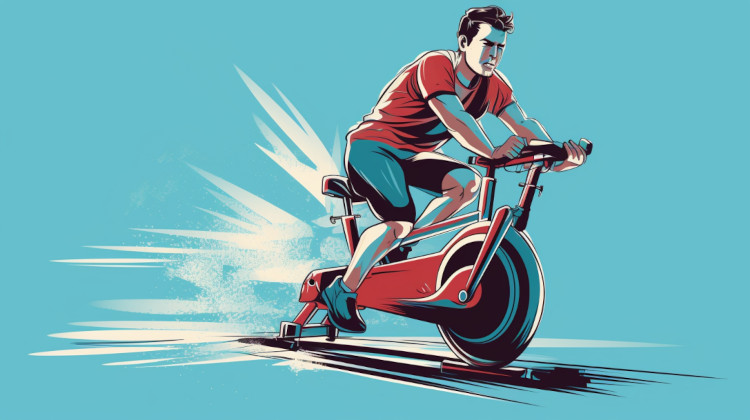
The safety and toxicology of cannabinoids are still undergoing studies. Therefore, it's crucial that you learn about some primary cannabis safety considerations before introducing it into your physical training sessions.17
Some people may face a higher risk of adverse effects than others, such as:
- People Consuming Other Medications - Various prescription meds may interfere with or magnify cannabis' effects, including certain anti-anxiety medications, antidepressants, anticonvulsants, anticoagulants (blood thinners), pain medications, and sedatives.
- People with Cardiovascular Disease - Cannabis use may increase the risk of cardiovascular accident (CVA) among patients susceptible to cardiovascular disease.18
- Respiratory Disease Patients - Smoking cannabis may result in lung hyperinflation, airway inflammation, and airway resistance.
- People with Serious Liver Conditions - Studies on animals and cellular cultures have presented some evidence that cannabis can worsen liver fibrosis and steatosis.19
- People with Poor Kidney Health - Cannabis may help ease nausea, vomiting, and pain in patients with chronic kidney disease (CKD). Still, a study published in Cannabis and Cannabinoid Research learned that the plant may adversely influence kidney function among people with kidney disease.20
- Heart Disease Patients - Just one hour after smoking cannabis, the risk of heart attack may increase.
“Patients with certain conditions or on certain medications should be cautious about using cannabis, especially while exercising,” according to Dr. Kessler. “If you have preexisting conditions or are on any prescription medications, it’s best to speak with your doctor before adding cannabis to a workout routine.”
How Long Should I Wait to Work Out After Taking Cannabis?
A carefully chosen strain of medical cannabis may deliver a burst of energy and mental well-being that could help you accomplish your fitness goals. On the other end of cannabis' broad spectrum, some strains could do the opposite. Due to its initial heart-rate stimulating effects — an increase of 20-50 beats per minute — you may want to wait a few hours before working out.
Dr. Kessler notes, “There isn’t a one-size-fits-all answer to how long you should wait to exercise after consuming cannabis. This can depend on your general level of fitness, preexisting conditions, and other medications you may be taking. For athletes with a history of cannabis consumption, I advise them to take the smallest appropriate dose and wait until the effects have peaked to begin a workout.”
How long a weed high lasts depends on metabolism, tolerance, consumption method, strain, and the presence of other substances. Test the waters to determine your tolerance and physical/mental abilities post-consumption. The existing research signifies that cannabis is not likely to impact long-term athletic performance, but this evidence is inconclusive.
What Are Some Tips and Precautions When Working Out While High?

“Be smart and know your limitations,” Dr. Kessler advises. From the kettlebell swing to the Romanian deadlift, “There are numerous gym workouts to avoid if you're a beginner gym member, if you're consuming cannabis pre-workout, and definitely if you tick both boxes.” As mentioned above, operating heavy machinery or equipment under the influence of cannabis is not advisable, so avoid strenuous workouts that involve using hazardous gym equipment.
Gym-related emergency room visits recorded in the US National Electronic Injury Surveillance System (NEISS) revealed that the treadmill causes the most harm, with one mother-of-four dying after hitting her head on one of these machines. Common treadmill injuries include back and spinal cord injuries, torn ligaments, fractured bones, knee injuries, abrasions, and head injuries.
Use cannabis cautiously until researchers and scientists unravel the plant's effects on athletic performance. If you try it before, after, or during a workout, start using small doses (microdosing). Opt for products that take some time to take effect, such as supplements, drinks, and edibles, to avoid unpleasant experiences with abrupt onset, which might happen if you drop a high-dose tincture under your tongue, dab potent extracts, or vape cannabis. Should this happen mid-workout, it's worth learning how to sober up from cannabis.
Are There Any Strains or Cannabis Products That Can Help in Working Out?
“What works for one athlete won’t work for everyone,” says Dr. Kessler. “If you are new to cannabis – or new to working out – it’s best to speak with your doctor about potential products and the right dose that can work for you.”
Mentally soothing “indica” strains high in THC and dominant in terpenes like linalool or myrcene may send consumers into a couch-locking state of relaxation, making them more commonly used post-workout. Alternatively, “sativa” strains high in terpenes like pinene and limonene are associated with an energy-lifting high, making them ideal for many athletes looking to amplify physical activity sessions and kickstart their motivation.
Cannabinoid and terpenoid composition serve as integral cogs in the inner workings of the ECS, thus they may influence the overall outcome of working out while high. Understanding the exercise-related benefits of these naturally occurring compounds will make the process of choosing a strain/product much simpler.
Cannabinoids
Choosing which cannabinoids may be best for you when it comes to working out can be a bit of trial and error, as each individual responds differently to cannabis. Consumers have endorsed both THC and CBD as benefiting their workout in one way or another. However, there are also several minor cannabinoids to consider as well. Cannabigerol (CBG) has been demonstrated in research to have potential anti-anxiety, appetite stimulant, and pain-relieving properties.21 In contrast, the mildly intoxicating cannabinol (CBN) may relax the muscles after a heavy gym workout.22
Terpenes
Concealed within the plant's hair-like structures (trichomes), terpenes deliver a delicious dose of aroma and potential therapeutic power. A study from the University of Arizona Health Sciences found that a handful of cannabis terpenes possess pain-relieving qualities, including beta-caryophyllene, humulene, limonene, myrcene, and alpha-pinene, which also have energy-boosting properties.
Pre-Workout Strains
Based on consumer reports, these cannabis strains may help induce a good night's sleep before workouts, not to mention possibly producing cerebral focus, pain relief, and energizing effects that can prepare you for physical activity sessions. While no cannabis products are proven to help with athletic performance, here are a few highly-rated strains that you can enjoy before your workout:
- ACDC (20:1 CBD:THC Ratio)
- Jack Herer (1:1)
- Green Crack (2:1)
- Harle-Tsu (20:1)
- Charlotte's Web (30:1)
- Ringo's Gift (Varies from 1:1 to 24:1)
Post-Workout Strains
Wallow in a smidgen of euphoric pleasure with these strains. Consumers have reported these strains may help you wind down and soothe tired muscles post-workout without plummeting into a slump:
- Cannatonic 2:1 THC:CBD Ratio)
- Harlequin (2:5)
- Bubba Kush (1:1)
- Girl Scout Cookies (1:1)
- Hindu Kush (1:1 to 2:1)
- White Widow (1:2 to 1:3)
Since cannabis terpenes, flavonoids, and cannabinoids may produce the "entourage effect" when consumed together, you must discuss your cannabis-related intentions with a doctor or healthcare practitioner.
“Cannabis and exercise aren’t going to work for everyone,” Dr. Kessler qualifies. “And in some cases the combination can increase risk of injury rather than alleviate pain or reduce recovery time. It is essential to get the go-ahead from a certified medical marijuana doctor who can assess your physical fitness level and risk factors for cannabis use not only during exercise, but as a whole.”
References
- Docter S, Khan M, Gohal C, et al. Cannabis Use and Sport: A Systematic Review. Sports Health: A Multidisciplinary Approach. 2020;12(2):189-199. doi:https://doi.org/10.1177/1941738120901670
↩︎ - Kramer A, Sinclair J, Sharpe L, Sarris J. Chronic cannabis consumption and physical exercise performance in healthy adults: a systematic review. J Cannabis Res. 2020;2(1):34. Published 2020 Oct 7. doi:10.1186/s42238-020-00037-x
↩︎ - YorkWilliams SL, Gust CJ, Mueller R, et al. The New Runner’s High? Examining Relationships Between Cannabis Use and Exercise Behavior in States With Legalized Cannabis. Frontiers in Public Health. 2019;7. doi:https://doi.org/10.3389/fpubh.2019.00099
↩︎ - Gillman AS, Hutchison KE, Bryan AD. Cannabis and Exercise Science: A Commentary on Existing Studies and Suggestions for Future Directions. Sports Medicine. 2015;45(10):1357-1363. doi:https://doi.org/10.1007/s40279-015-0362-3
↩︎ - Gruber SA, Sagar KA, Dahlgren MK, Racine MT, Smith RT, Lukas SE. Splendor in the Grass? A Pilot Study Assessing the Impact of Medical Marijuana on Executive Function. Frontiers in Pharmacology. 2016;7. doi:https://doi.org/10.3389/fphar.2016.00355
↩︎ - Bilbao A, Spanagel R. Medical cannabinoids: a pharmacology-based systematic review and meta-analysis for all relevant medical indications. BMC Medicine. 2022;20(1). doi:https://doi.org/10.1186/s12916-022-02459-1
↩︎ - Brierley DI, Samuels J, Duncan M, Whalley BJ, Williams CM. Cannabigerol is a novel, well-tolerated appetite stimulant in pre-satiated rats. Psychopharmacology. 2016;233(19-20):3603-3613. doi:https://doi.org/10.1007/s00213-016-4397-4
↩︎ - Rojas-Valverde D. Potential Role of Cannabidiol on Sports Recovery: A Narrative Review. Frontiers in Physiology. 2021;12. doi:https://doi.org/10.3389/fphys.2021.722550
↩︎ - Henshaw FR, Dewsbury LS, Lim CK, Steiner GZ. The Effects of Cannabinoids on Pro- and Anti-Inflammatory Cytokines: A Systematic Review of In Vivo Studies. Cannabis Cannabinoid Res. 2021;6(3):177-195. doi:10.1089/can.2020.0105
↩︎ - Bachhuber M, Arnsten JH, Wurm G. Use of Cannabis to Relieve Pain and Promote Sleep by Customers at an Adult Use Dispensary. J Psychoactive Drugs. 2019;51(5):400-404. doi:10.1080/02791072.2019.1626953
↩︎ - Alshaarawy O, Anthony JC. Are cannabis users less likely to gain weight? Results from a national 3-year prospective study. International Journal of Epidemiology. 2019;48(5). doi:https://doi.org/10.1093/ije/dyz044
↩︎ - Lisano JK, Flores VA, Kisiolek JN, Stewart LK. Regular Use of Cannabis in Female Athletes Is Associated With a Reduction in Early Anaerobic Power Production. Journal of Strength and Conditioning Research. 2022;Publish Ahead of Print. doi:https://doi.org/10.1519/jsc.0000000000004297
↩︎ - Kroon E, Kuhns L, Cousijn J. The short-term and long-term effects of cannabis on cognition: recent advances in the field. Current Opinion in Psychology. 2021;38:49-55. doi:https://doi.org/10.1016/j.copsyc.2020.07.005
↩︎ - Saugy M, Avois L, Saudan C, et al. Cannabis and sport. Br J Sports Med. 2006;40 Suppl 1(Suppl 1):i13-i15. doi:10.1136/bjsm.2006.027607
↩︎ - Sharpe L, Sinclair J, Kramer A, de Manincor M, Sarris J. Cannabis, a cause for anxiety? A critical appraisal of the anxiogenic and anxiolytic properties. J Transl Med. 2020;18(1):374. Published 2020 Oct 2. doi:10.1186/s12967-020-02518-2
↩︎ - Mostofsky E, Laier E, Levitan EB, Rosamond WD, Schlaug G, Mittleman MA. Physical Activity and Onset of Acute Ischemic Stroke: The Stroke Onset Study. American Journal of Epidemiology. 2010;173(3):330-336. doi:https://doi.org/10.1093/aje/kwq369
↩︎ - MacCallum CA, Lo LA, Boivin M. “Is medical cannabis safe for my patients?” A practical review of cannabis safety considerations. European Journal of Internal Medicine. 2021;89:10-18. doi:https://doi.org/10.1016/j.ejim.2021.05.002
↩︎ - Subramaniam VN, Menezes AR, DeSchutter A, Lavie CJ. The Cardiovascular Effects of Marijuana: Are the Potential Adverse Effects Worth the High? Missouri Medicine. 2019;116(2):146-153. https://www.ncbi.nlm.nih.gov/pmc/articles/PMC6461323/
↩︎ - Zhu J, Peltekian KM. Cannabis and the liver: Things you wanted to know but were afraid to ask. Canadian Liver Journal. 2019;2(3):51-57. doi:https://doi.org/10.3138/canlivj.2018-0023
↩︎ - Rein JL, Zeng H, Georgia Brown Faulkner, et al. A Retrospective Cohort Study That Examined the Impact of Cannabis Consumption on Long-Term Kidney Outcomes. Cannabis and cannabinoid research. Published online February 15, 2023. doi:https://doi.org/10.1089/can.2022.0141
↩︎ - Calapai F, Cardia L, Esposito E, et al. Pharmacological Aspects and Biological Effects of Cannabigerol and Its Synthetic Derivatives. Evidence-Based Complementary and Alternative Medicine: eCAM. 2022;2022:3336516. doi:https://doi.org/10.1155/2022/3336516
↩︎ - Wong H, Cairns BE. Cannabidiol, cannabinol and their combinations act as peripheral analgesics in a rat model of myofascial pain. Arch Oral Biol. 2019;104:33-39. doi:10.1016/j.archoralbio.2019.05.028
↩︎
The information in this article and any included images or charts are for educational purposes only. This information is neither a substitute for, nor does it replace, professional legal advice or medical advice, diagnosis, or treatment. If you have any concerns or questions about laws, regulations, or your health, you should always consult with an attorney, physician or other licensed professional.

